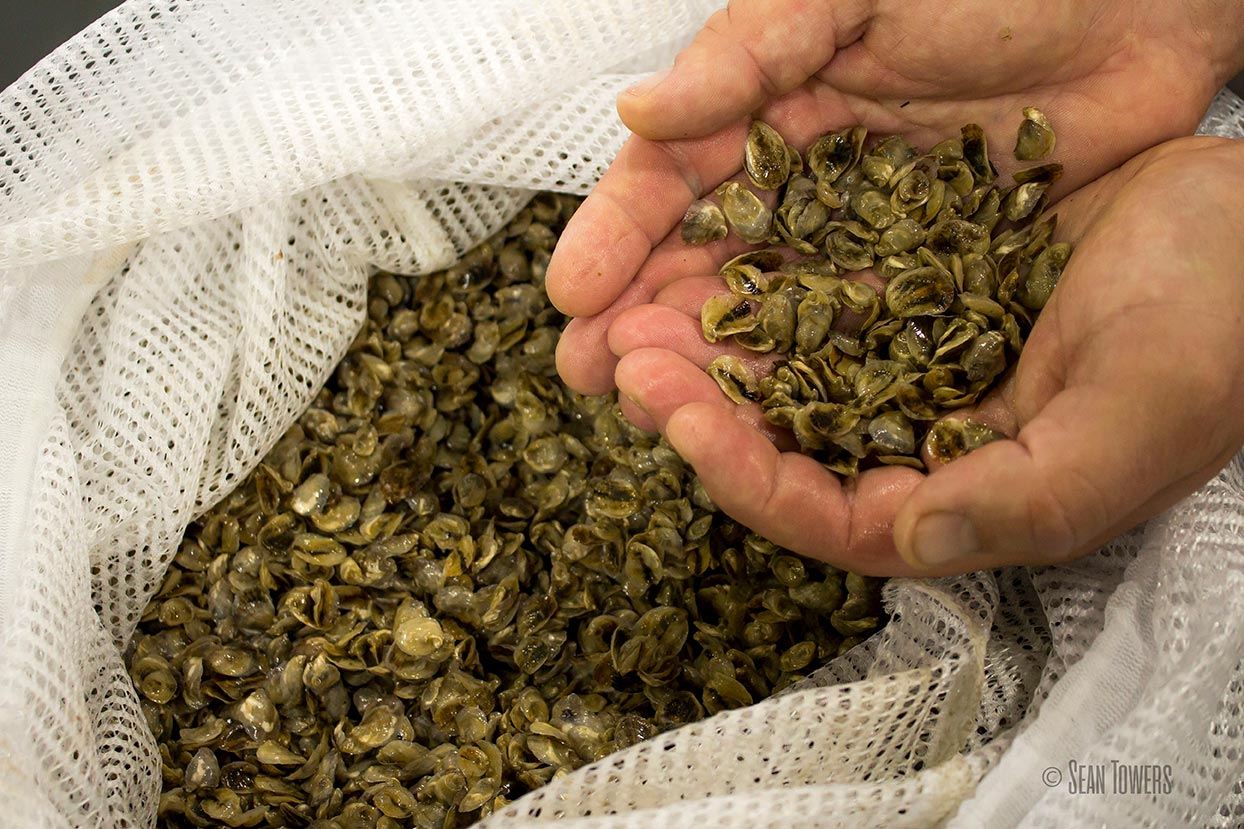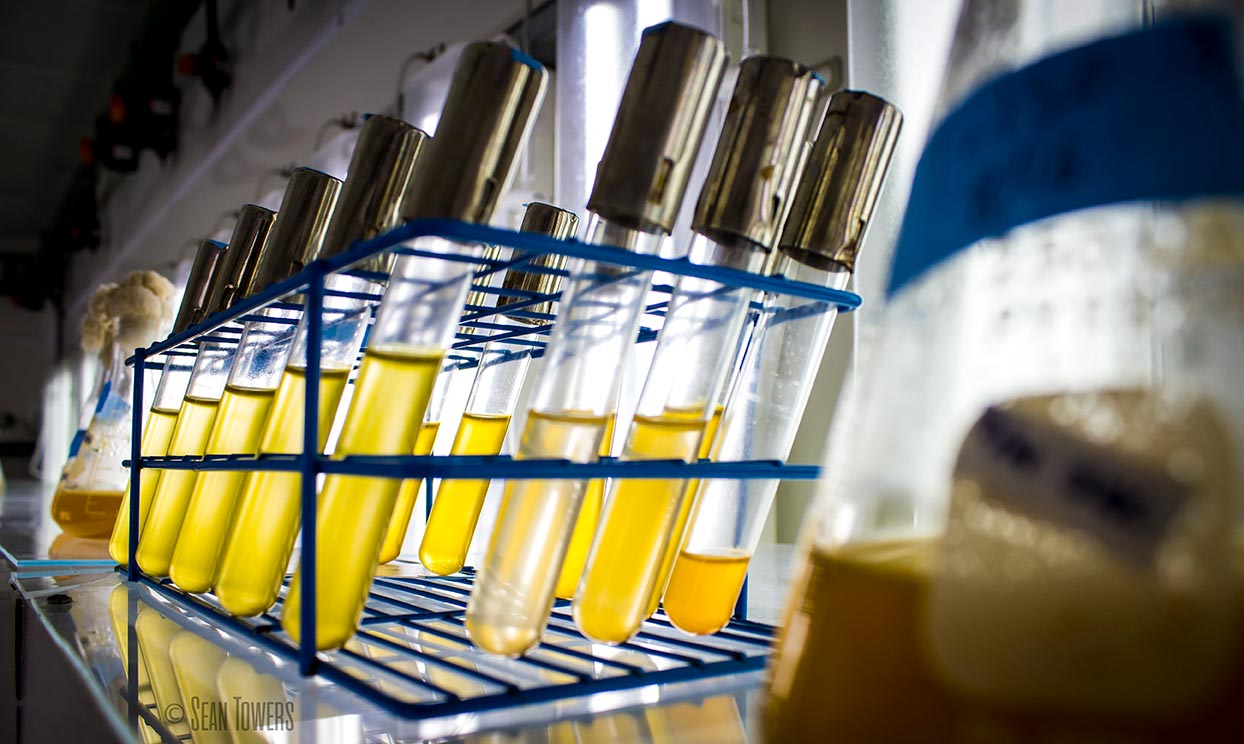Main Content



What are seed oysters?
Seed oysters are small oysters, about 2–25 mm long, provided primarily to oyster growers for the half-shell market. They can also be used to restore natural oyster populations or natural ecosystems, and for research.
Oyster seed production starts with parent oysters, or broodstock, which provide gametes (eggs and sperm). Fertilized eggs become microscopic oyster larvae, which swim freely for about two weeks before metamorphosing, or changing, into oyster “spat,” or juvenile oysters. After a few weeks or months, the spat are considered seed oysters.
Broodstock
Broodstock are adult oysters (2–3 years old) used to make baby oysters. At the AIC, most broodstock are a strain of the Eastern oyster (Crassostrea virginica) developed at Rutgers University. The “Rutgers oyster” is fast-growing and disease resistant.
In the Delaware Bay, natural oyster populations tend to reproduce in late June or early July.
At the AIC, broodstock oysters are moved into temperature-controlled tanks in January, given plenty of food (also produced at the AIC) and are ready to reproduce by late February.
Gametes
The gametes (eggs and sperm) from ripe broodstock are either released naturally by the oysters or removed surgically. A single adult female oyster can produce many millions of eggs in a season.
The gametes from male and female broodstock are mixed together to allow fertilization of the eggs.
Fertilized eggs become oyster larvae.
Larvae
Oysters spend about 14 days as larvae. Larvae are microscopic and free-swimming. Two days after fertilization, oyster larvae already have shells.
Larvae at the AIC are raised in filtered, sterilized seawater so microalgae must be added daily as food.
Larval tanks are drained every two days. The water is drained through filter screens that retain the larvae, which are observed for condition, counted, and measured, before being returned to the larval tanks with food and clean water.
Juvenile oysters (“spat”)
After about two weeks, larvae are ready to metamorphose, or change, into “spat”, or juvenile oysters.
In nature, larvae attach to a solid surface such as an adult oyster shell. At the AIC, the larvae metamorphose without attaching (“cultchless”), yielding individual oysters (“singles”) that are ideal for the half-shell market.
Newly-metamorphosed oysters are barely visible to the naked eye and are raised in filtered seawater in “downwellers,” where they are fed cultured algae and grown to a more manageable size. After about two weeks, they are moved to “upwellers” in raw seawater and feed on whatever food is naturally available.
Seed oysters
Juvenile oysters are regularly sorted by size, counted, and re-distributed in the upweller nursery to optimize growth and survival. Depending on their intended use, they spend several weeks to several months in the nursery system before being moved as “seed oysters” to grow-out or restoration areas.